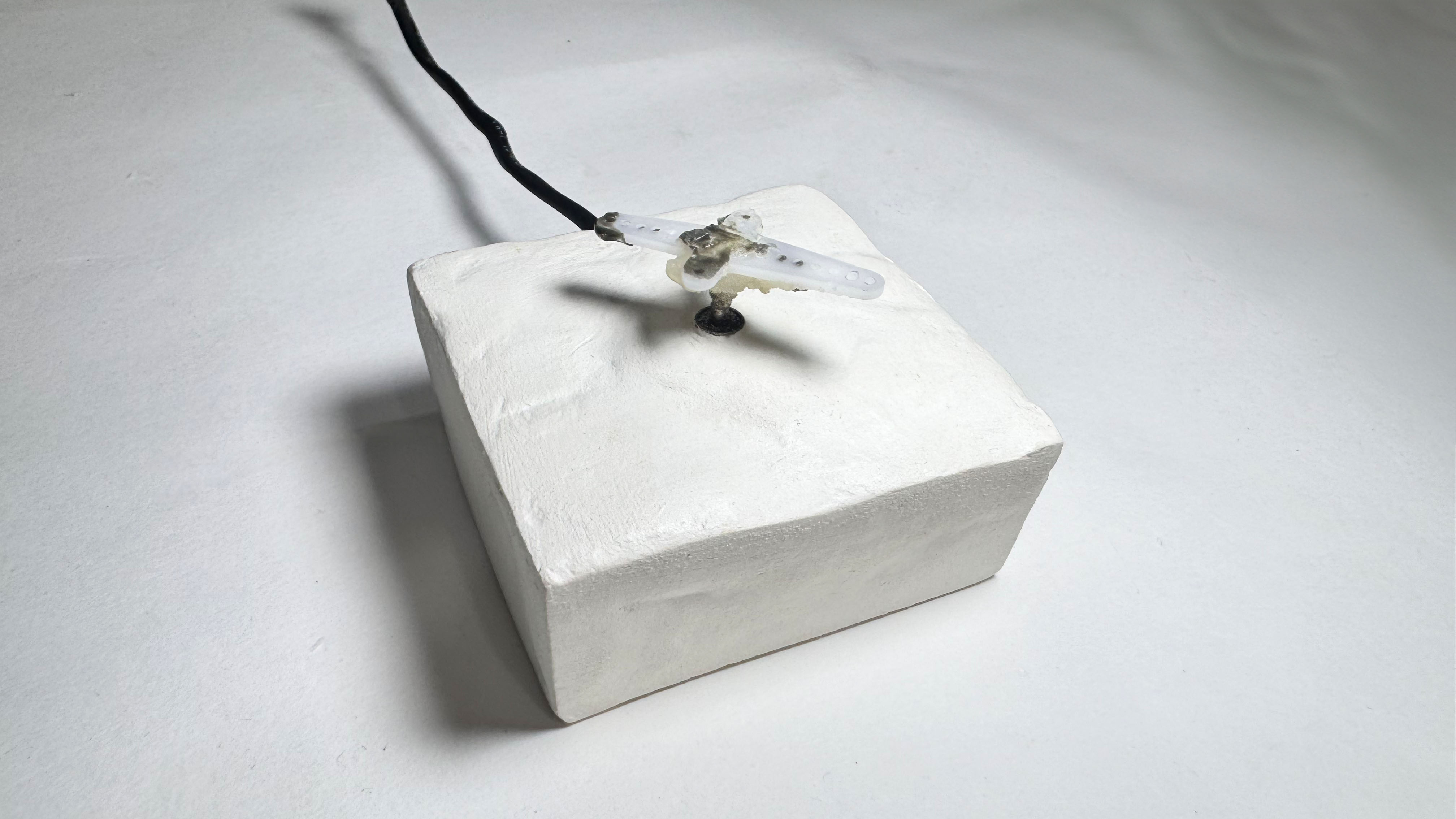
Week 12
Open Studios took place in week twelve, and we showcased all of our completed work to the public and individuals of various skill levels. There was a long list of things to do before I was able to display my work during open studio. Initially, my goal was to figure out how to fasten the structure to the motor. I discovered that adding baking soda to super glue causes a chemical reaction that makes the glue immediately dry extremely hard. I thought it would be something suitable to attach the construction to after finding a plastic component that came with the servomotor I had since semester 1. I then bonded the wire to the plastic piece after attaching it to a L bracket. This is when the unexpected occurred—after everything had dried. The structure is not spinning and the motor is not functioning
Upon closer inspection, I discovered that the reason the motor stopped spinning was because my structure's weight was pressing the motor pin downward. I believe the DC motor I was using was too tiny to support the weight. This meant that going forward, I would have to switch to a different kind of motor. However because of the time constraint, I was unable to replace the motor in time, so I made do with what I had in order to have something to show at open studios.

I wanted to create a print that gave a quick explanation of my previous experiments and works before showcasing them. I planned to utilise the most yellow A4 paper available at the print shop to give my content an old appearance, drawing inspiration from the Chinese scroll for its layout. After printing, I'll attach all of my A4 paper together so that it unfolds like a scroll. In my write-up and poster, I decided to offer a succinct synopsis of my project and the brand in addition to my logo.


Through open studio, there were some issues I noticed regarding my prototype. Firstly the motor did not work as intended. This means, I have to look into different motors that supports weight instead of a small DC motor. Secondly, as my tilt sensor is designed to look like a pearl, the ball rolls around which made the experience activate when it is not suppose to. Moving forward, a holder should be designed to keep the tilt sensor from activating before any users picked it up. Thirdly, there was a problem with the game that caused it to advance to the subsequent round even in the absence of any input. Only once the proper sequence has been entered should the game advance to the next level.
This indicates that while my work was being shown, the game was also operating itself and everything went awry since the sensor, which is a ball, causes it to start itself. I chose to unplug my prototype primarily during the open studio as a result of the problem. I also understood that the experience should have an appropriate conclusion because, as it stands, the game simply ends there without any sense of closure.
In this instance, visitors only left two reviews, both of which focused mostly on how interesting they thought my structure looked. Additionally, I saw that most of the individuals that came to my booth did so because of the way my structure looked, and they were snapping pictures of it. Given that it draws attention, I would say that my build is visually successful in this instance.